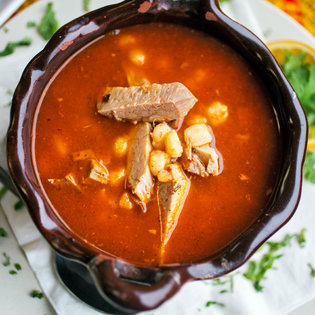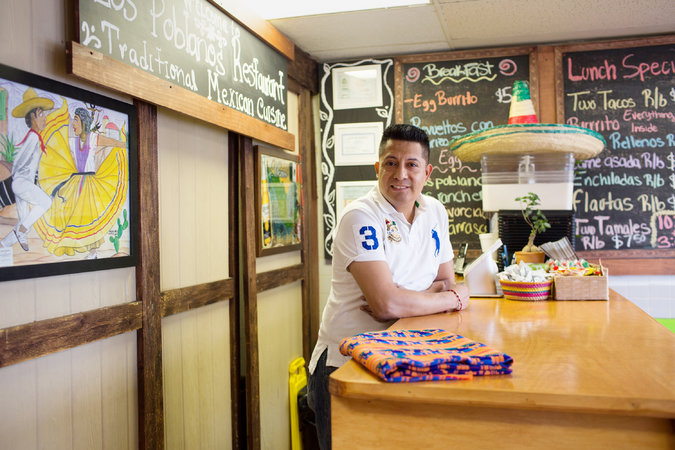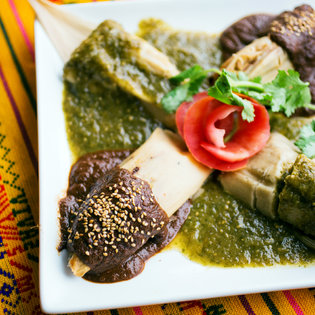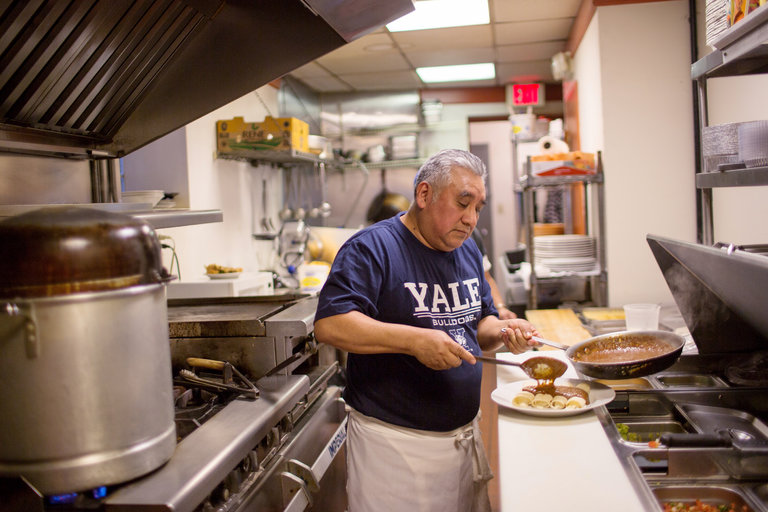As I’ve told friends for years, if I ever get to heaven, I hope to find that it’s a parking lot, right off a great surf-break beach, lined with taco trucks. If there’s one cuisine I could happily munch into eternity, it’s Mexican street food.
So I’ve been very happy about the crop of upmarket taco restaurants sprouting around my home state the past few years, with their artisanal-tequila cocktail menus and chichi ingredients (crunchy kale, slow-roasted pork belly, spice-glazed duck breast). But for every Bartaco and Bodega Taco Bar I’ve visited, it seems as if I’ve driven past a smaller, less glossy Mexican restaurant, set amid discount stores in a strip-mall shopping plaza, or peeking from between the entrances to glitzier restaurants. These spots, some with hand-lettered signs in their windows, got me wondering: What sorts of pleasures might they offer beyond my beloved tacos? Plenty, as a tour of small, under-the-radar Mexican restaurants recently proved. Though not all were noteworthy, three of the tiny, family-run, amazingly cheap spots I tried have become new favorites.
La Cosinita, in New Haven, was the first jewel I stumbled upon. Tucked around the corner from the downtown restaurant drag of Chapel Street, its narrow storefront (with curiously spelled signage — “The Little Kitchen” in Spanish would typically be written “La Cocinita”) was one I’d passed many times on my way to other restaurants. When I entered the dining room one afternoon, my expectations were low: Though the pumpkin-colored stucco walls and tables covered in checkered plastic tablecloths were immaculate, the place was empty. But 15 minutes after I’d placed my order, having the space to myself suddenly seemed like a good thing — because there was no one to witness my graceless, if appreciative, slurping.
 The dish I’d chosen, enchiladas mole (from a list including fajitas, tostadas and quesadillas), was enormous, messy and, it turned out, utterly delicious. The plate of tender white-meat chicken in soft tortillas was topped with crumbled cotija cheese, shredded lettuce and slices of radish, and smothered in reddish-brown, richly spicy-sweet mole — a complex, traditional Mexican sauce that varies regionally, but that ordinarily includes up to 40 ingredients and takes all day to cook.
The dish I’d chosen, enchiladas mole (from a list including fajitas, tostadas and quesadillas), was enormous, messy and, it turned out, utterly delicious. The plate of tender white-meat chicken in soft tortillas was topped with crumbled cotija cheese, shredded lettuce and slices of radish, and smothered in reddish-brown, richly spicy-sweet mole — a complex, traditional Mexican sauce that varies regionally, but that ordinarily includes up to 40 ingredients and takes all day to cook.
When I spoke by phone later to La Cosinita’s owner, Facundo Xicohténcatl, he told me (through my Spanish-speaking husband, who interpreted) that the mole I’d eaten was made with roasted chipotle and pasilla peppers, tomatoes, garlic, cinnamon and more than a dozen other spices, and that it was of the sort made in his home state of Tlaxcala, Mexico. Since 2008, when Mr. Xicohténcatl opened his restaurant with his daughter Betty, he said, he’d made sure that every dish served there was made “en la manera vieja” (“the old way”), in house — including all the salsas and sauces, the tortillas and even the chips served to every table before meals. His aim, he said, was to recreate the feeling of the family kitchens he’d known growing up.
I found a similar dedication to custom at Mexicali Rose, a blink-and-you’ll-miss-it spot in Newtown along a stretch of Route 25 populated with shopping centers and gas stations. During my lunchtime visit I found the interior a bit worn but cheerfully kitted out, with a multicolored tile floor and Mexican memorabilia (postcards, maps, framed artwork and painted plates, much of it from Oaxaca, where the owner’s family hails from) on the walls. A cooler was filled with Jarritos — Mexican sodas in flavors like tamarind and hibiscus. The sound of mariachi and the aroma of sizzling meat drifted from the kitchen in back.
Choosing what seemed like the most distinctive item on the menu, chiles rellenos stuffed with spiced ground pork and chicken (ordinarily, the dish is made with cheese), I again hit the jackpot. The meat-filled poblano peppers, served smoking hot, had been egg-battered, fried to a light crunch and topped with a chunky, fresh tomato sauce. It was top-notch, as was the accompanying basket of warm, crispy chips with fresh jalapeño-spiked guacamole.
I was later told that the unusual recipe for chiles rellenos had been passed down for generations in the owner’s family. “It was originally my great-great-grandmother’s,” said Michael Hidalgo, whose parents, Minerva and Maklin, opened Mexicali Rose in 1996 (and, more recently, began a second location in Bethel, now run by Mr. Hidalgo’s uncle). Mr. Hidalgo more or less grew up in the restaurant; one of his childhood memories is of being hoisted onto a milk crate on a busy night so that he could help with a sink full of dishes. Now in his 20s, he cooks — from scratch, every day — much of the fare on the menu. “Except for the chiles rellenos,” Mr. Hidalgo said. “My mother still mostly makes those herself. She’s slowly revealing the secrets to me, though.”
 A sense of history also infused the offerings at Los Poblanos, just north of Stew Leonard’s on the Post Road in Norwalk. When I stopped there for lunch, the tiny space — painted in colors of lime and papaya, with just five wooden tables and a takeout counter — was filled with hungry diners, some speaking in Spanish, others in English. The wall-mounted blackboards were filled with handwritten specials. Many of them incorporated ingredients that I would have been hard-pressed to find at more fashionable taquerias; there were tacos made with lengua (beef tongue) and quesadillas made with flor de calabaza (squash blossom) and huitlacoche (a trufflelike corn fungus that’s a pungent delicacy in Mexico).
A sense of history also infused the offerings at Los Poblanos, just north of Stew Leonard’s on the Post Road in Norwalk. When I stopped there for lunch, the tiny space — painted in colors of lime and papaya, with just five wooden tables and a takeout counter — was filled with hungry diners, some speaking in Spanish, others in English. The wall-mounted blackboards were filled with handwritten specials. Many of them incorporated ingredients that I would have been hard-pressed to find at more fashionable taquerias; there were tacos made with lengua (beef tongue) and quesadillas made with flor de calabaza (squash blossom) and huitlacoche (a trufflelike corn fungus that’s a pungent delicacy in Mexico).
I opted for tamales, which I’ve long loved but found hard to come by in Connecticut. I chose wisely. My pair of tamales arrived on the plate still wrapped in the traditional corn husks they’d been steamed in. One was stuffed with tangy, gooey queso fresco, chopped jalapeños and epazote (a leafy herb); the other contained moist shredded chicken slathered in mole negro, a darker mole variation flavored with chiles, roasted pumpkin seeds and chocolate.
 Juan Bautista, who has owned and run Los Poblanos with his wife, Miyra, since 2013 and who worked for more than a decade in the kitchens of other Connecticut restaurants after emigrating from Puebla, Mexico, said cooking authentic Mexican cuisine was a matter of both national and personal pride. “Did you know that tamales, just like the ones you had at my restaurant, were one of the dishes the conquistadors first brought back to Spain?” Mr. Bautista asked. “They brought them as proof that civilization in Mexico was advanced. When I make Mexican cuisine, I feel like I am honoring that kind of deep history.”
Juan Bautista, who has owned and run Los Poblanos with his wife, Miyra, since 2013 and who worked for more than a decade in the kitchens of other Connecticut restaurants after emigrating from Puebla, Mexico, said cooking authentic Mexican cuisine was a matter of both national and personal pride. “Did you know that tamales, just like the ones you had at my restaurant, were one of the dishes the conquistadors first brought back to Spain?” Mr. Bautista asked. “They brought them as proof that civilization in Mexico was advanced. When I make Mexican cuisine, I feel like I am honoring that kind of deep history.”
That’s not to say, Mr. Bautista added, that the newfangled taco restaurants, which may take more liberties with traditional fare, don’t have their place. “Some of them are really good,” he said. “But on their days off, all their chefs eat here.”


